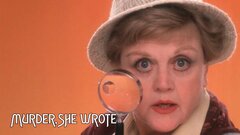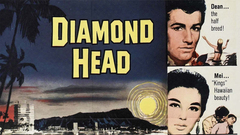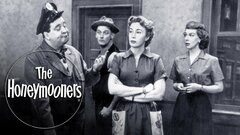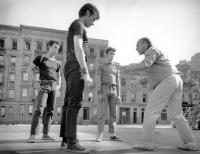A talented stage and screen dancer, actor George Chakiris rose from the chorus to the role of Bernardo, leader of the Sharks, in the celebrated film version of "West Side Story" (1961). His fiery turn won him an Academy Award, but did not translate into lasting fame. After a sporadic career in Hollywood as heroic young men of various nationalities in "Diamond Head" (1963) and "Kings of the Sun" (1963), he made a handful of fine if little-seen European films, including the charming French musical "Young Girls of Rochefort" (1967), before settling into character turns as heels or middle-aged Lotharios on American primetime and daytime television.
He often cited "West Side Story" as his proudest accomplishment. It was undoubtedly the finest showcase for his dancing skills and magnetic screen presence, which went untouched in the half-century since the film's release.
The son of Greek immigrants from Turkey, George Chakiris was born Sept. 16, 1934 in Norwood, OH. His family relocated frequently throughout his childhood before eventually settling in Long Beach, CA. There, Chakiris joined the choir at St. Luke's Episcopal Church, and appeared with them in the 1947 musical "Song of Love" with Katherine Hepburn and Paul Henreid.
The experience inspired him to find a way into the movie business, but he lacked the means to do so. After a brief stint at Long Beach City College, he discovered the American College of Dance in Hollywood, and became obsessed with joining the school and learning the craft. Chakiris had been dancing from an early age, often joining his sister in impromptu routines in the family's living room, but his visit to the college solidified his desire to dance in the movies.
He took a job at the May Co. department store, which paid for a room on Hollywood Boulevard and the tuition to the school, as well as for night classes in dance, singing and drama. By 1951, he was appearing as a dancer or chorus member in numerous musicals, including the iconic "Diamonds Are a Girl's Best Friend" number with Marilyn Monroe in "Gentlemen Prefer Blondes" (1953), "White Christmas" (1954) and "Brigadoon." Most of Chakiris' early appearances were uncredited, though in films like "The 5,000 Fingers of Dr. T" (1953) and "Meet Me in Las Vegas" (1956), he was billed as George Kerris.
In 1958, he headed for New York City to make his mark on Broadway, but ended up in London for an 18-month stint as Riff in the West End production of "West Side Story." His experience with the show helped him land the part of the hot-blooded Bernardo when Robert Wise began casting for his 1961 film version, which in turn, launched his film career in a spectacular fashion.
Wise's "West Side Story" won 10 Academy Awards, including a Best Supporting Actor trophy for Chakiris, as well as a Golden Globe. His success led to a five-picture deal with United Artists, though the terms of the contract were "pay or play;" in other words, if he found no concrete work prior to a payment, the studio would cast him in a film of their choice. This led to a string of high-profile but unremarkable features that frequently cast Chakiris as a headstrong ethnic type. He was a kindly Hawaiian doctor in "Diamond Head" (1963) opposite Charlton Heston, then a Mayan prince in J. Lee Thompson's "Kings of the Sun" (1963) and a Greek resistance fighter in "The High Bright Sun" (1964).
Most of these efforts had little impact on the box office, leading Chakiris to find more substantive work in Europe, most notably as the young hero of Luigi Comencini's award-winning crime film "La ragazza di Bube ("Bebo's Girl" ) (1963) and as a smooth-talking carny in Jacques Demy's beloved musical "The Young Girls of Rochefort" (1967) with Gene Kelly and Catherine Denueve. By the late-1960s, he was concentrating largely on a career as a nightclub singer while spending most of his screen time on television in a variety of guest-starring roles as either suave international villains or well-preserved romantic figures like Shirley Jones' old flame in the final episode of "The Partridge Family" (ABC, 1970-74).
In 1974, he received praise for his turn as composer Frederic Chopin in the BBC miniseries "Notorious Woman" with Rosemary Harris as poet George Sand.
By the mid-1980s, Chakiris was a staple of daytime television, with recurring turns on soap operas like "One Life to Live" (ABC, 1968-2012) and "Santa Barbara" (NBC, 1984-1993) as well as a run on "Dallas" (CBS, 1978-1991). After a two-season stint as Professor Peterson, who aided "Superboy" (syndicated, 1988-1992) in fighting crime across Metropolis, he retired from screen acting, though he returned infrequently to the stage for productions of "The King and I" and "Jane Eyre." Chakiris devoted most of his time to creating and designing silver jewelry, which began as a hobby before blossoming into a full-time career.
































































































